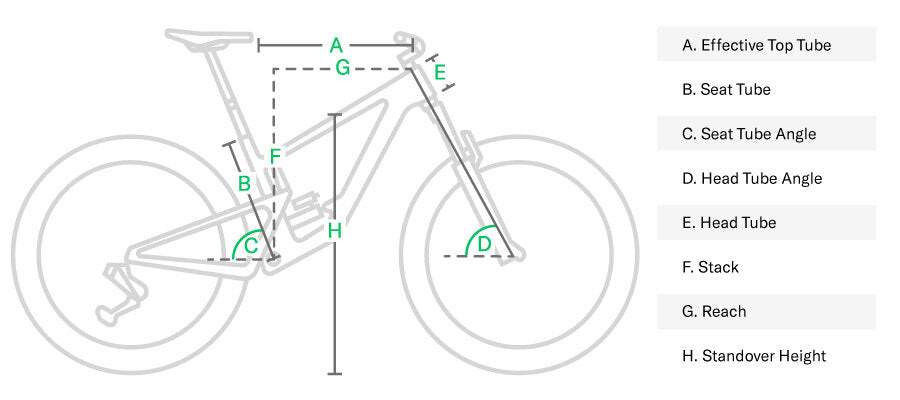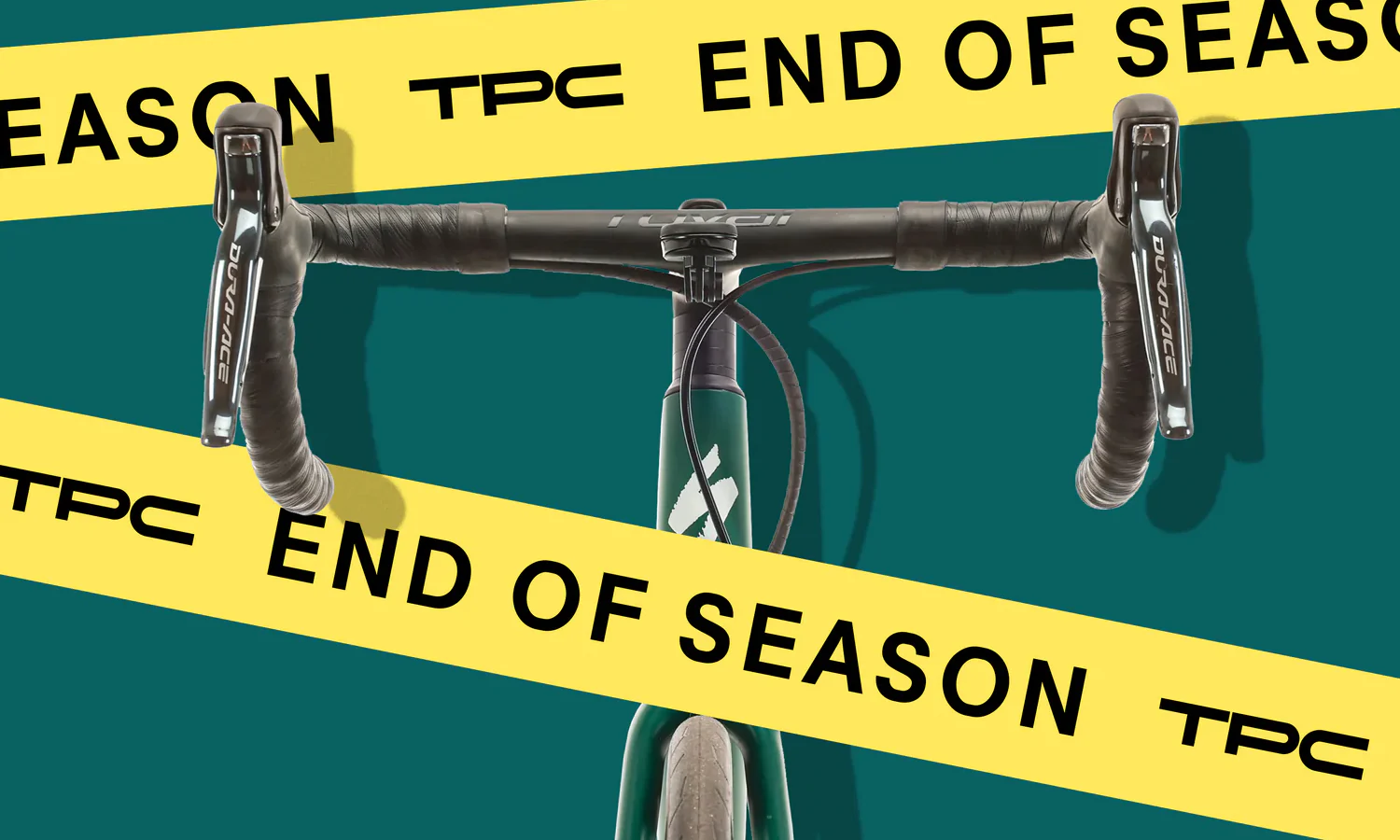In order to choose the right bike, you have to start by determining the right size for your body and your riding plans. This guide will help familiarize you with some of the basic bike frame measurements that influence how a bike fits. Comparing your current bike's measurements to a new model can help you evaluate sizing. If you have the opportunity, test-riding a bike can help confirm fit. It might even be a good idea to have a professional fit done, so that you know all of the key measurements. But first, let's get you get started with the basics.
How are bikes sized?
Your height is a significant factor in choosing a bike frame size. When you shop for a bike with TPC, we offer a recommended size range for any given model. Components can be swapped to adjust bike fit, but the frame is the skeleton, so always start with the right bones! As frames get larger, everything expands to accommodate longer limbs, arms, and torso. The seat tube, top tube, head tube, and reach all get longer as you size up.
Road bike sizing guide
Road bikes are generally sized using centimeters. Traditionally, frame size equals the seat tube length. So a 54cm frame would have a seat tube that’s 54cm long. The top tube length will also be close to that same length. This has changed a bit with modern compact frame designs. Now, depending on the brand, some 54cm bikes might actually have a 52cm, 50cm, or even shorter seat tube. To eliminate the confusion this causes, a few brands have switched to lettered sizes: small (S), medium (M), large (L). At The Pro’s Closet, we equate 48cm-51cm with small, 52cm-55cm with medium, and 56cm-58cm with large.
Tip: When in doubt, check the top tube measurement.

Mountain bike sizing
Unlike a road bike, where your position tends to be stationary, on a mountain bike, you move around a lot more, and generally are not in the same position for very long. Therefore, the sizing is less focused on top tube length and instead geared toward a good fit and handling for riding in and out of the saddle, descending or climbing. Mountain bikes use lettered sizes: small (S), medium (M), large (L), and sometimes XS and XL.
Tip: The reach measurement will tell you more about MTB fit than top tube length.
Gravel bike sizing
Dedicated gravel bikes are usually sized like road bikes. When it comes to choosing a gravel bike, you’ll want to feel comfortable the same way you would on a road bike. The big decisions when it comes to gravel have more to do with wheel size, tire size, and tire pressure.
Tip: Keep an eye on stack. This dimension is often taller on gravel bikes, and can put your bars higher than a similar road bike.
Are frame sizes standard across manufacturers?
Although numbers do mean something — 54 centimeters is always 54 centimeters — each manufacturer does things a little differently. So, buying a bike is a lot like buying a pair of pants. One version of the size might feel bigger, smaller, or better than another version of the same size. Check the size charts. On road and gravel bikes, compare the top tube length between brands. With mountain bikes, see how the reach compares between bikes.
What factors should I keep in mind when sizing?
Bike size charts usually recommend a range of rider heights for each size. For instance, a 54cm or medium frame will fit someone who is between 5’6” and 5’9”. If you’re in the middle of a range, that’s probably the best size for you. If you’re at either end of the range, you may have to decide if you want to size up or down. There is some overlap between sizes so a 5’9” rider could fit on a larger size depending on their proportions.
Tip: If you your torso and arms are long, in proportion to your body, you might want a larger frame size. Riders with long legs and short torso/arms might opt to go down a frame size.
Reach out to our Ride Guides if you’re between sizes and need advice!
If you spend a lot of time pedaling in the saddle (road and gravel bikes) your top tube needs to be appropriate for your torso and arm length. It is typically measured on a horizontal axis from the center of the seatpost to the center of the fork's steerer tube. It’s easy to dial your bike's cockpit with a shorter or longer stem.
Tip: Need a starting point? Measure the top tube of your current bike, or ride a friend's bike and take a measurement of that top tube.
Reach is a bit more abstract and difficult to measure. It is the horizontal distance between the bottom bracket and head tube. Essentially, this is how long or short a bike's cockpit feels when you're standing on the pedals. As we mentioned, this is a key measurement for mountain bikes, since you're often riding out of the saddle.
Stack is also a noteworthy measurement of the vertical distance from bottom bracket center to a virtual horizontal line from the top of the head tube. This helps dictate the bike’s handlebar height. Experienced riders often prefer lower stack measurements. Newer riders might be more comfortable with higher handlebars. Hamstring and lower back flexibility can also allow riders to fit a frame with lower stack.
Tip: Gravel bikes and endurance road bikes typically have taller stack, compared to aero road bikes or all-around road bikes.
Want to geek out on geometry? We've got a more in-depth article for you.
Bicycle standover height
You may remember some version of this measurement as a kid. Basically, stand over the top tube of the bike, if your feet comfortably touch the ground, and the top tube isn’t jammed up in your groin, that’s the bike for you! Obviously it’s not quite that simple, and standover height is just one part of the equation. But as long as you’re taking several other fit parameters into consideration, standover height isn’t a bad place to start. TPC lists the standover height for all bikes. You can compare this to your inseam measurement to make sure a bike you’re interested in isn’t too tall. To accurately measure your inseam, stand against a wall with a book or flat object between your legs and use that to measure from your groin to the ground.
Overall body size and bike fit
No matter how many measurements you take, no two bodies are the same. Many brands are now creating women’s bikes that accommodate longer legs and shorter torsos, shorter reach, and lighter bodies.
It’s a good idea to not only know height and weight, but also inseam length. The more measurements you know, the easier it will be to find your perfect bike.
Conclusion
If you have a bike that fits well, but it’s time to upgrade, look up the geometry of your current bike. That’s a great starting point for a new bike. Look for something that has the same or similar stack, reach, and top tube length, for starters. If you’ve been riding a bike that doesn’t fit right, or if you’re a beginner, it’s not a bad idea to get a professional bike fit so that you have all the important measurements and a recommendation of what to look for.
Also know that frame size is just the beginning — adjusting things like handlebar height, width, or shape, stem length, and seatpost setback will make your riding experience so much better. If possible, always test ride a number of different bikes, so that you can compare how different brands feel. There’s a lot that goes into finding the perfect bike, but when you do, you’ll never want to stop riding.

























